3 Cheap Ways to Make a DIY Frame for Your Boat Winter Cover
A boat frame is often used in conjunction with a winter cover to provide support and tension to the cover. However, buying a pre-made cover and frame can be expensive. Luckily, several cheap ways exist to make a DIY frame for your boat's winter cover.
One option is to use PVC pipes to create a frame for your boat cover. Another option is to use aluminum to create a sturdy, corrosion-free, and lightweight frame. If you prefer a traditional look, your third option is to use wood to create a boat cover support.
Ideally, you can also use metal as an alternative material to wood. It's more durable and requires little maintenance. However, it can have a higher initial cost than PVC, aluminum, or wood. If you've decided which material to go for, let's hop into how each of these frames is done, so you can get started.
Summary
- Building a boat cover frame from PVC pipes is popular due to its affordability and ease of customization, but it may not be as durable as other materials.
- Wood provides a traditional look and can be durable, but it requires more maintenance and may not be as long-lasting as other materials.
- Aluminum is lightweight and durable, but has higher costs (around $150–300) and is difficult to work with compared to other materials.
- Metal is a good alternative to wood as it is often more durable and long-lasting and can also be more cost-effective in the long run, but it has a higher upfront cost, around $200–$400.
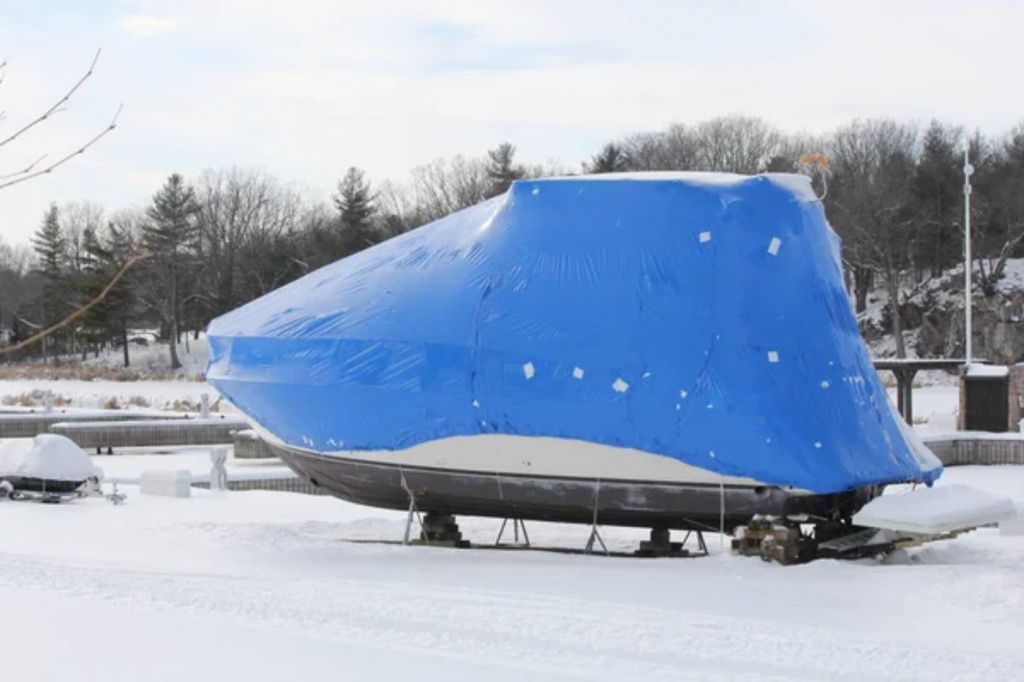
On this page:
Building A Cheap Winter Boat Cover Frame
The table below shows the pros and cons, as well as the estimated costs of building a DIY winter boat cover frame using different materials:
| Boat Cover Frame Ideas | Pros | Cons | Estimated Price |
|---|---|---|---|
| PVC Pipes | Affordable, easy to work with, lightweight | Not as durable as other materials, may not withstand heavy snow or wind | $50 - $100 |
| Wood | Traditional look, sturdy, can withstand heavy snow or wind | More difficult to work with, may require more maintenance, heavier than PVC or aluminum | $100 - $200 |
| Aluminum | Durable, lightweight, can withstand heavy snow or wind | More expensive than PVC or wood, may require special tools to work with | $150 - $300 |
| Metal | Durable, strong, can withstand heavy snow or wind, fire-resistant | More expensive than PVC or wood, may require special tools to work with, can rust if not properly treated | $200 - $400 |
Planning your DIY boat cover frame
Now, before you start building your DIY boat cover frame, you need to plan it out carefully to ensure a successful project. Here are some tips to help you plan your DIY boat cover frame:
Take accurate measurements
Measure the length, width, and height of your boat, and make a note of any protruding features, such as a mast. This will help you determine the dimensions of your boat cover frame.
Decide on the type of frame
You can build a wooden frame, or use PVC pipes and fittings to create a boat cover support system. The latter is a cheaper and easier option, and you can easily customize it to fit your boat's dimensions.
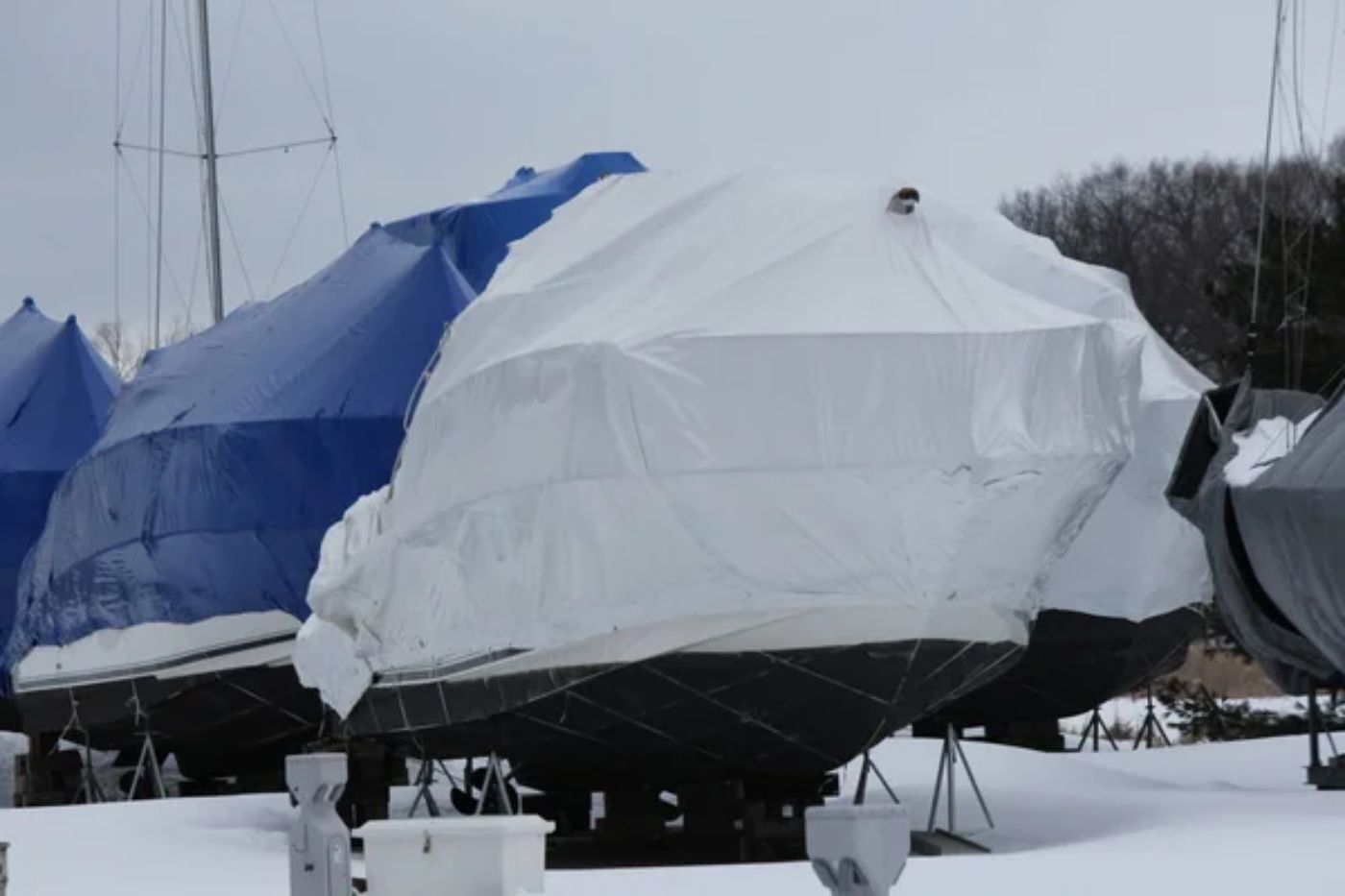
Determine the number of straps needed
To secure your boat cover, you will need to attach straps to the frame. Determine the number of straps you need based on the dimensions of your boat and the type of frame you are building. You may need to drill holes in the frame to attach the straps.
Choose the right tools
To build your DIY boat cover frame, you will need a few basic tools, such as a drill, screwdriver, and saw. Make sure you have all the necessary tools before you start your project.
For a step-by-step process on how to build a boat cover frame, you can read this article.
Making A DIY Frame Using PVC Pipes
PVC pipes are a popular choice for building a DIY boat cover frame because they are affordable and easy to work with.
Materials needed to make A DIY frame using PVC pipes
To build a PVC boat cover frame, you will need PVC pipes, elbows, connectors, a tubing cutter, a drill, and clamps. The cost of each is stated in the table below:
| Material/Tool | Estimated Cost |
|---|---|
| PVC pipes (10ft) | $2 - $5 |
| PVC pipes (20ft) | $6 - $10 |
| Elbows and connectors | $0.50 - $2 each |
| Tubing cutter | $10 - $20 |
| Drill | $20 - $50 |
| Clamps | $5 - $10 per pack |
| Total estimated cost | $50 - $150 |
Steps in making a DIY frame from PVC pipes
- First, measure your boat to determine the size of the frame you need.
- Cut the PVC pipes to the appropriate length using a tubing cutter.
- Use elbows and connectors to join the pipes together to create the frame.
- Drill holes in the pipes where you want to attach the cover.
- Use clamps and bungee cords to secure the cover to the frame.
Advantages and disadvantages of a DIY frame made of PVCs
Advantages of using PVC pipes
One of the advantages of using PVC pipes is that they are flexible and can be easily bent to fit the shape of your boat. This flexibility allows you to customize the frame to fit your specific boat shape and size, providing a snug fit and maximum protection from the elements.
Another advantage of using PVC pipes is that they are resistant to corrosion and rust, making them ideal for use in marine environments. They are also easy to clean and maintain, making them a cost-effective solution for building a boat cover frame.
Disadvantages of using PVC pipes
While there are several advantages to using PVC pipes for a DIY boat cover frame, there are also some disadvantages to consider:
-
Durability: While PVC pipes are resistant to corrosion and rust, they are not as strong as metal or wood. In harsh weather conditions, the pipes may bend or break, which can compromise the structural integrity of the frame and reduce its effectiveness in protecting your boat.
-
Weight: PVC pipes are lightweight, which can be an advantage when it comes to assembly and disassembly of the frame. However, this lightweight nature may also make the frame less stable in windy conditions and may require additional anchoring or weighting down.
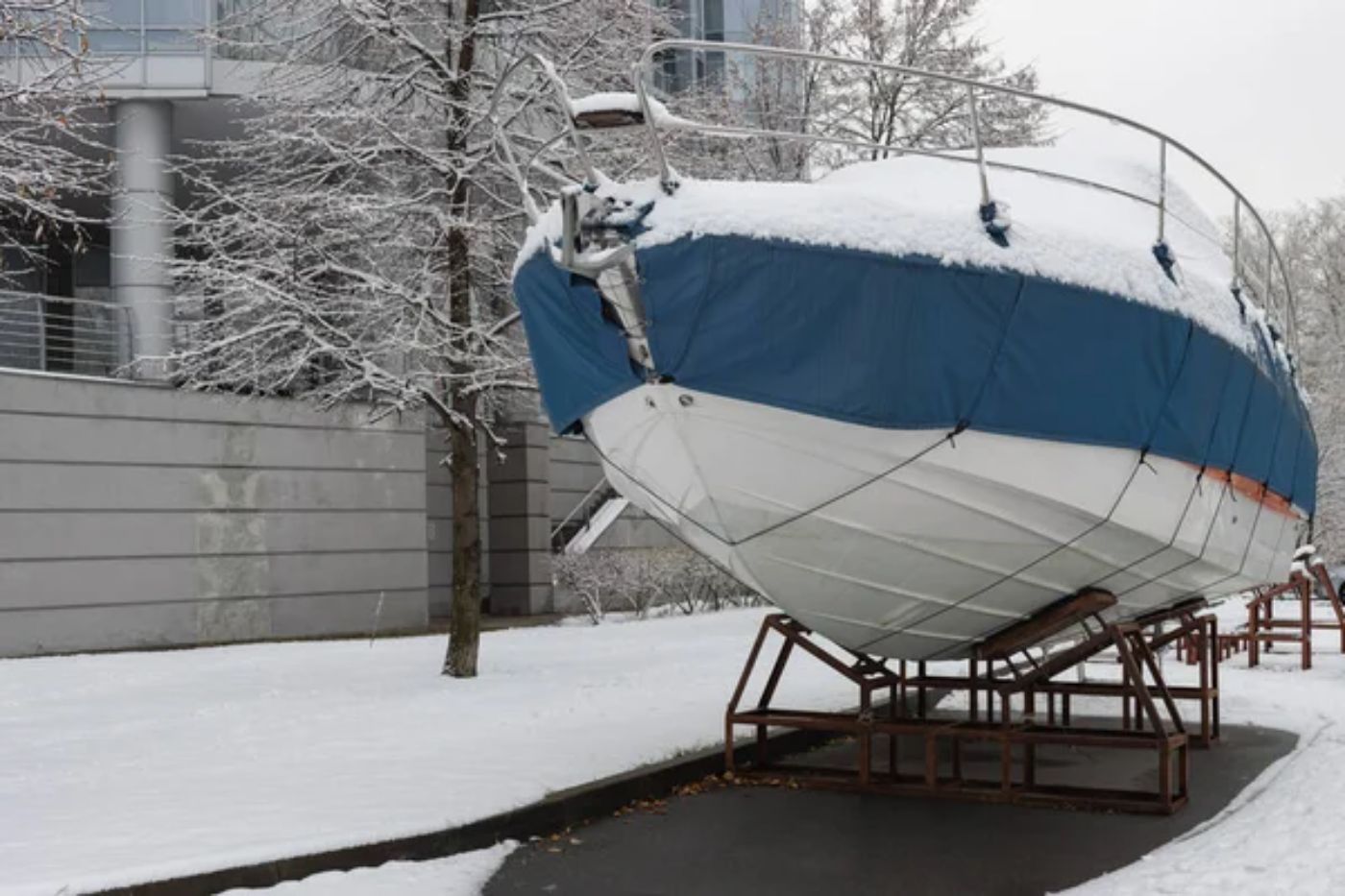
-
Aesthetics: PVC pipes may not look as aesthetically pleasing as other materials such as metal or wood. This may be a consideration if you want your boat cover frame to blend in with the surrounding environment or if you have strict aesthetic requirements.
-
Environmental impact: PVC is a type of plastic that is not biodegradable and can take hundreds of years to decompose. This means that if the pipes are not disposed of properly, they can contribute to environmental pollution.
Building A DIY Boat Cover Frame Using Wood
If you prefer a more traditional look, you can build a DIY boat cover frame using wood.
Materials needed in building a DIY frame using wood
To build a wooden boat cover frame, you will need a saw, a hacksaw, a drill, screws, and plywood. The cost of materials is stated in the table below:
| Material | Estimated Cost |
|---|---|
| Saw | $20-50 |
| Hacksaw | $10-20 |
| Drill | $30-70 |
| Screws | $10-20 |
| Plywood | $20-40 |
| Wood boards | $20-50 |
| Clamps | $10-20 |
| Bungee cords | $10-20 |
Steps in building a DIY frame out of woods
- Measure your boat to determine the size of the frame you need.
- Cut the wooden boards to the appropriate length using a saw.
- Use a hacksaw to cut holes where you want to attach the cover.
- Join the boards together to create the frame using screws.
- Attach the cover to the frame using clamps and bungee cords.
Pros and cons of using wood as a boat cover frame
Pros of using wood
- Cost-effective: Building a wooden boat cover frame is typically more affordable than purchasing a pre-made frame.
- Customizable: You can customize the size and shape of the frame to fit your specific boat and needs.
- Durable: A well-constructed wooden frame can be sturdy and reliable, providing long-lasting protection for your boat.
- Easy to repair: If any part of the frame becomes damaged, it can be easily repaired or replaced with new wood.
Cons of using wood
- Time-consuming: Building a wooden boat cover frame can be a time-consuming process, especially if you're not experienced with woodworking.
- Requires tools: You will need access to certain tools such as a saw, drill, and hacksaw to build the frame, which may require an additional investment if you don't already own them.
- Requires regular maintenance: Wood can be susceptible to rot and damage from moisture, so you might need to take steps to maintain the frame and prevent these issues.
- Limited lifespan: While a well-maintained wooden frame can last for several years, it may not be as long-lasting as other materials such as metal or PVC.
Using Aluminum To Craft A DIY Boat Cover Frame

Aluminum is a lightweight and durable material that is resistant to corrosion and rust, making it a popular choice for boat covers.
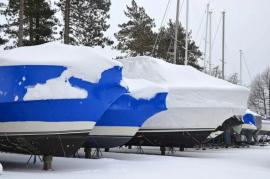
What's the Best Material for Winter Boat Covers?
Materials required to build an aluminum boat cover frame
To build an aluminum boat cover frame, you will need to purchase aluminum tubing, connectors, and fasteners. You will also need a saw, a drill, and a measuring tape to cut and assemble the frame. The cost of each one can be found in the table:
| Material | Estimated Cost |
|---|---|
| Saw | $20-50 |
| Tubing cutter | $10-20 |
| Drill | $30-70 |
| Screws | $10-20 |
| Aluminum pipes | $50-100 |
| Connectors | $30-50 |
| Fasteners | $20-40 |
Steps to craft a DIY frame from aluminum
- Measure your boat to determine the size of the frame you need.
- Cut the aluminum pipes to the appropriate length using a tubing cutter.
- Drill holes in the pipes where you want to attach the cover.
- Join the pipes together to create the frame using screws.
- Attach the cover to the frame using clamps and bungee cords.
Benefits and drawbacks of using aluminum as a DIY boat cover frame
Benefits of using aluminum
- Lightweight: Aluminum is a lightweight material, which makes it easy to handle and install.
- Durable: Aluminum is resistant to corrosion and rust, which means that it will last longer than other materials such as wood or PVC.
- Customizable: You can customize the size and shape of the frame to fit your specific boat and needs.
- Low maintenance: Aluminum requires minimal maintenance, making it a convenient option for those who want to spend less time maintaining their boat cover frame.
Drawbacks of using aluminum
- Cost: Aluminum is typically more expensive than other materials such as wood or PVC, which may make it a less affordable option for some people.
- Difficult to cut and assemble: Aluminum can be more difficult to cut and assemble than other materials, especially if you don't have experience working with metal.
- Limited lifespan: While aluminum is durable, it may not be as long-lasting as other materials such as steel or PVC.
- Conducts heat: Aluminum can conduct heat, which means that it may become hot to the touch in direct sunlight.
Utilizing Metal In Making A DIY Boat Cover Frame
If you're looking for an alternative to wood, metal can be a great option for building a DIY boat cover frame. Metal is often more durable and long-lasting than wood, and it can also be more cost-effective in the long run since it requires less maintenance and is less likely to need repairs or replacements.
Materials for building a DIY frame using metal
To build a metal boat cover frame, you will need a saw, a drill, screws, metal tubing, metal connectors, and a metal cutting blade. The cost of materials is stated in the table below:
| Material | Estimated Cost |
|---|---|
| Saw | $20-50 |
| Drill | $30-70 |
| Screws | $10-20 |
| Metal tubing | $50-100 |
| Metal connectors | $20-40 |
| Metal cutting blade | $10-20 |
Steps in building a DIY frame using metal
- Measure your boat to determine the size of the frame you need.
- Cut the metal tubing to the appropriate length using a metal cutting blade.
- Use metal connectors to join the tubing together to create the frame.
- Use screws to secure the connectors and tubing together.
- Attach the cover to the frame using clamps and bungee cords.
Pros and cons of using metal as a boat cover frame
Pros of using metal
- Durable: Metal is often more durable and long-lasting than wood, making it a great option for a boat cover frame.
- Low maintenance: Metal requires less maintenance than wood and is less likely to need repairs or replacements.
- Customizable: You can customize the size and shape of the frame to fit your specific boat and needs.
- Easy to repair: If any part of the frame becomes damaged, it can be easily repaired or replaced with new metal tubing.
Cons of using metal
- Higher upfront cost: Building a metal boat cover frame can be more expensive upfront than building a wooden frame.
- Requires tools: You will need access to certain tools such as a saw, drill, and metal cutting blade to build the frame, which may require an additional investment if you don't already own them.
- Heavier: Metal is generally heavier than wood, which may make it more difficult to transport and maneuver.
- May develop rust: Depending on the type of metal you use and how well you maintain the frame, it may be susceptible to rust and corrosion over time.
Guide On How To Make A Sailboat Winter Cover Frame
A sailboat winter cover frame is a structure that is used to support a winter cover over a sailboat during the cold months of the year. The frame is typically made of metal or PVC pipes and is designed to fit the specific dimensions and shape of the sailboat.
The winter cover is then draped over the frame and secured in place to protect the boat from snow, ice, and other harsh weather conditions. The frame provides support for the cover and helps prevent it from sagging or collapsing under the weight of snow and ice.
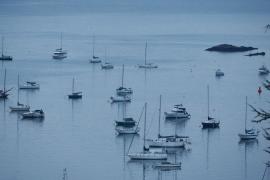
How to Winterize Your Sailboat Cheaper & Quicker
To make a sailboat winter cover frame, you will need the following materials:
- Metal or PVC pipes (1-2 inches in diameter)
- Pipe connectors (T-joints, elbow joints, etc.)
- Measuring tape
- Hacksaw or pipe cutter
- Drill and screws (if using metal pipes)
- Rope or bungee cords
- Winter cover
Step-by-step process to create a sailboat winter cover frame

-
Measure the length, width, and height of your sailboat to determine the size of the frame you will need.
-
Cut the metal or PVC pipes to the appropriate lengths using a hacksaw or pipe cutter.
-
Assemble the pipes and connectors to create the frame. Use T-joints to connect the pipes that will form the base of the frame and elbow joints to create the corners.
-
If using metal pipes, drill holes in the connectors and attach the pipes using screws to secure them in place.
-
Once the frame is assembled, drape the winter cover over it and secure it in place using rope or bungee cords.
-
Make sure the cover is tight and secure, with no sagging or gaps that could allow snow or ice to accumulate on the boat.
-
Check the frame and cover periodically throughout the winter to ensure they remain secure and in good condition.
Did you find the answer to your specific question?
👍 0 👎 0
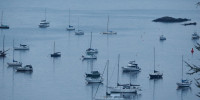
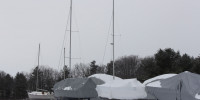
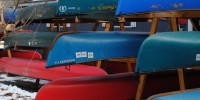

Leave a comment